Media | Articles
2024 Ford Mustang EcoBoost Review: More Mustang for more people
They’re calling this new Mustang the seventh generation. Hmmm! They sure don’t define that word “generation” like they used to. The first-gen Mustang went from 1964 to 1974 and was replaced by the radically smaller, Pinto-based Mustang II. The Mustang II was replaced in 1979 by the fabulous Fox, and the Fox by the curvy, ovular SN95 in 1994. Now those were generational changes.
By comparison, the 2024 Mustang (internal code name: S650) is about a 3.5-magnitude quake on the Richter scale, definitely a lot less than a complete rupture. Meaning it retains a lot of the previous-gen S550 of 2015–23, the body hard points and suspension pretty much the same. America’s favorite (and last remaining) pony car hasn’t gone all-wheel-drive, or adopted hybrid-electric gizmology, or suddenly incorporated tons of composite materials. Even with its dazzling new in-car electronics, it remains as it was before: a handsome if slightly porky nostalgia piece for folks who like to revel in the good old days.

But there is enough new that we can cut Ford a little slack here. Because of the company’s peculiar information embargos, we’ll be covering the V-8-equipped GT in a separate story. For now, we’re sticking just to the base EcoBoost turbo-four versions—starting prices of $32,515 for the hardtop coupe and $40,615 for the convertible—which some lucky journos got to flog for a hot summer second over Southern California mountains last week.
We were part of the pack and can say that though the EcoBoost is half the cylinder count of the V-8, it’s still got plenty of punch, dash, and flair to give gas jockeys a tingle, even without an available manual transmission. And for 2024, Ford proves that it knows its Mustang customers well by equipping certain versions with a new electronic handbrake optimized for drifting. For really dedicated show-offs, there’s a button on the fob that lets you rev the engine while standing outside the car. Cars and coffee will never be the same.
Unfortunately, Ford nixes the manual from the EcoBoost order sheet for 2024, no doubt because the bulk of buyers are rental fleets and people with less obsession for all-out performance. And it costs big money to certify each separate engine-transmission combo. Heck, Ferrari did away with manuals decades ago and the gates of Maranello haven’t burned, so be glad you can still get a stick in the Mustang GT. For now.
Marketplace
Buy and sell classics with confidence
Specs: 2024 Ford Mustang EcoBoost
Price: Coupe $32,515 / Convertible: $40,615
Powertrain: 2.3-liter turbocharged four-cylinder, 10-speed automatic
Horsepower: 315
Torque: 350 lb-ft
Layout: Rear-drive, two-door, four-passenger coupe or convertible
EPA-rated fuel economy: 21–22 city/29–33 highway
0–60 mph: 5.0-sec (est)
Competitors: Toyota GR86, Subaru BRZ, (the last) Chevrolet Camaro
Except for the fact that your only transmission choice is the 10-speed automatic, the new Mustang EcoBoost tries to be more things to more people, with loads of options and tons of personalization afforded by a highly digitized interior. There are 12 available wheels, 11 exterior colors with several options for hood and side stripes, four colors of Brembo brakes if you opt for the $3475 High Performance package, and a host of add-ons from car covers (two available colors) to a first-aid kit. Don’t sit down with the online configurator unless you have a free evening, because ordering a ’24 Mustang is not something you do during a commercial break.
Ford says it wants to broaden the car’s appeal to pull in new customers, especially younger buyers accustomed to staring at screens all day. So it has built the new Mustang with a lot of screen to stare at, infused with loads of submenus and wooly multicolor graphics to entertain and delight. The old “twin-brow” dash evocative of the 1960s original is gone, replaced by a 12.4-inch flat-screen instrument cluster adjoined seamlessly in one flowing rectangular wave of glass to the 13.2-inch touchscreen that is your portal to Ford’s Sync 4 infotainment system.

All of it is angled at the driver in what Ford claims is a riff on the all-glass cockpit of an F-35 fighter jet, with the operating system intended to mimic the latest video games. “It’s progressive, disruptive, pushing the Mustang into the future,” said Chris Walter, the Mustang’s exterior design director. “We want it to feel like a digital video game or the devices that [younger people] have grown up with.”
Disruptive for sure, especially in what is the market’s most pointedly retro vehicle (now that the Camaro and Challenger are dead). Do Mustang buyers really want to swipe their fingers on a screen to adjust cabin temps or select radio stations, choose their ambient lighting from a zillion possible colors—purple and yellow gauges anyone?—or spin a 3D rendering of their car to amuse their passengers?
Ford is gambling that they will. Or, at least, they won’t mind, especially since some functions can be done with steering-wheel buttons. And the screens usher the Mustang into the modern age, giving the driver access to features they never had before. Like picking from five different gauge displays, one of which is a digital simulation of the classic Fox-body instruments (yes, please!). You can select four different drive modes, ranging from “Slippery” to “Track,” which vary the throttle and stability control settings, and also pull up a screen with extra engine-performance gauges, an acceleration timer, or a track-lap timer.
It goes on and on. One of the few hard buttons on the dash has a small Mustang pony on it. The so-called “My Mustang” button takes you directly to the menu page for most of the drive features. Suffice to say, when they deliver your new Mustang, don’t let the salesperson out of the car until he or she has shown you everything. And fear not; the EcoBoost has the exact same menus and graphics as the GT.

Car writers used to usher in a new Mustang with talk about carburetor barrels and solid lifters; now we talk about 3D graphics engines and the user experience. As Captain Jack Aubrey observes in Master and Commander, “That’s the future; what a fascinating modern age we live in.” At least the screens are easy to read and, on our short drive, weren’t flustered by direct sunlight. Eventually you don’t even think about them, they just become part of this pony’s scenery.
No carburetor stats here, but there are things to talk about under the hood. The 2.3-liter inline-four has some significant changes, including a revised valvetrain that replaces flat-tappet lifters with roller finger-follower lifters to reduce friction for more efficiency. The direct fuel-injection system is now joined by separate port injectors, the two injector systems working together in certain lower-rpm situations to take fuller advantage of turbulence in the manifold for better burning and lower emissions. The turbo actually shrinks to reduce compressor inertia and hasten spool-up and thus throttle response, and an electronic wastegate replaces the old pressure valve to give precise control over boost dumps. Ford has also computerized the exhaust-gas recirculation system and rerouted the intake to bring the airbox closer to the manifold.

The net effect on paper is an eensy power bump, only from 310 horses to 315. Torque remains the same at 350 pound-feet, but there’s said to be an improvement in emissions, and there’s definitely a slight improvement in fuel economy. However, the net effect in the real world seems to be a livelier throttle response that makes the EcoBoost plenty assertive off a corner or up a freeway onramp. Is the feel you get in your butt the five horsepower, the revised throttle mapping, or better tuning of the 10-speed, which clicks in upshifts with the speed of a dual-clutch? Probably all of the above.
About that $3475 High Performance Package: Besides larger Brembo brakes; 19-inch wheels and 255/40 Pirelli PZero summer tires; a 3.55 Torsen limited-slip rear differential to replace the standard 3.15; a strut-tower brace; steering wheel paddle shifters; stiffer springs and sway bars; and a long list of other stuff, the package gives you the future option of selecting MagneRide electronic suspension. We say “future option” because, as of this writing, the press kit says it’s an option with the Performance Package, but as yet it’s not available to select on the online configurator. Also included is an electronic hand-operated parking brake, which is the enabler for the car’s Drift Brake.
As if YouTube wasn’t already crammed with Mustangs going sideways to disastrous effect, the factory has decided to give the nation’s budding drift-o kings a helping hand. There’s no release button on this hand brake, meaning you can yank and release at will to fishtail the car in whatever way best demonstrates that mother was wrong. In a parking lot demo, it proved fairly easy to pitch the big Stang around cones using just the right combo of brake and throttle, but it does strike us as equipping the car with a dedicated idiot mode. Then again, this is the company that brought you the Line Lock burnout feature for immolating rear tires.
When not drifting or driverless revving or doing other Mustang-y type silliness, the EcoBoost is a pleasant cruiser, potentially returning over 30 mpg on the highway. It’ll stretch out and relax, with decent sound insulation and a quiet mode among its four driver-selectable exhaust volumes, made possible by electronic muffler flaps (and, we suspect, varying levels of sound boosting through the car’s audio system).
The engineers tell us the steering rack has been revised and made 3 percent quicker. Which further helps the big car feel frisky in the hills, with direct steering and excellent composure over writhing pavement. Full disclosure: We only drove a Performance Pack version, with its stickiest possible rubber and firmest available springs. Even so, the ride was quite acceptable, and we dare say the Performance Package is well worth it if you’re not a cost accountant at Hertz or Avis.
Yes, we keep harping on how big and heavy the Mustang is. The lightest EcoBoost hardtop is just shy of 3600 pounds, according to the specs. The heaviest, a convertible GT, is over 4000. True, all of the latter-day muscle machines are in this weight neighborhood, but for roughly comparable prices, a Toyota GR86 is less than 2900 pounds. You know, just sayin’.
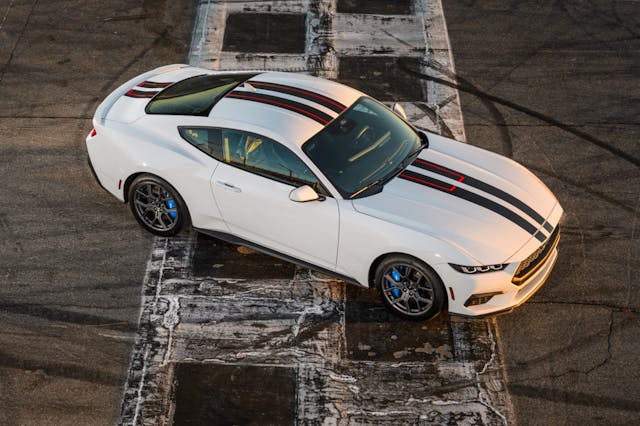
People will continue to call the EcoBoost the “base” Mustang and will look down on it, but since day one at the 1964 New York World’s Fair, the Mustang has always depended for its survival on the volume of its less flashy versions. The only difference today is that the “base” Mustang is so much better than any base car really has a right to be, it makes you wonder why the world even needs a GT. Well, we’ll tell you in the next story.
2024 Ford Mustang EcoBoost
Highs: Chassis keeps getting better; base engine has upgrades; up-to-date interior electronics; lots of freedom to customize.
Lows: Still a bit too heavy; all-iPads dash may not please traditionalists; no manual in the EcoBoost.
Takeaway: All the old Mustang attitude but improved, and at a semi-affordable price.
***
Check out the Hagerty Media homepage so you don’t miss a single story, or better yet, bookmark it. To get our best stories delivered right to your inbox, subscribe to our newsletters.
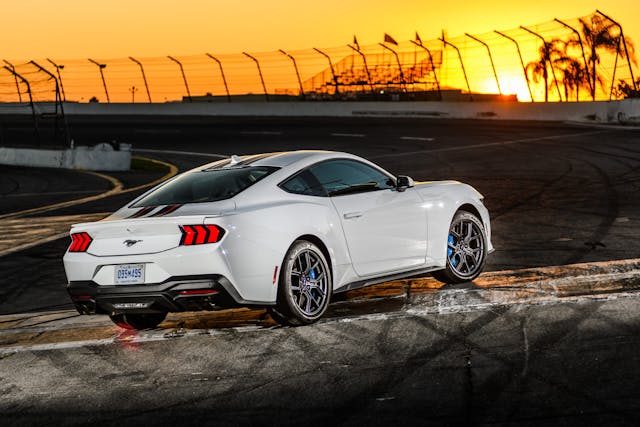





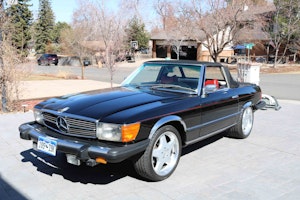

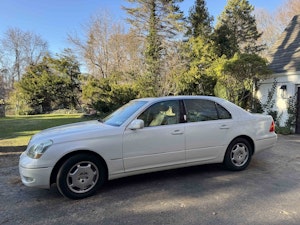

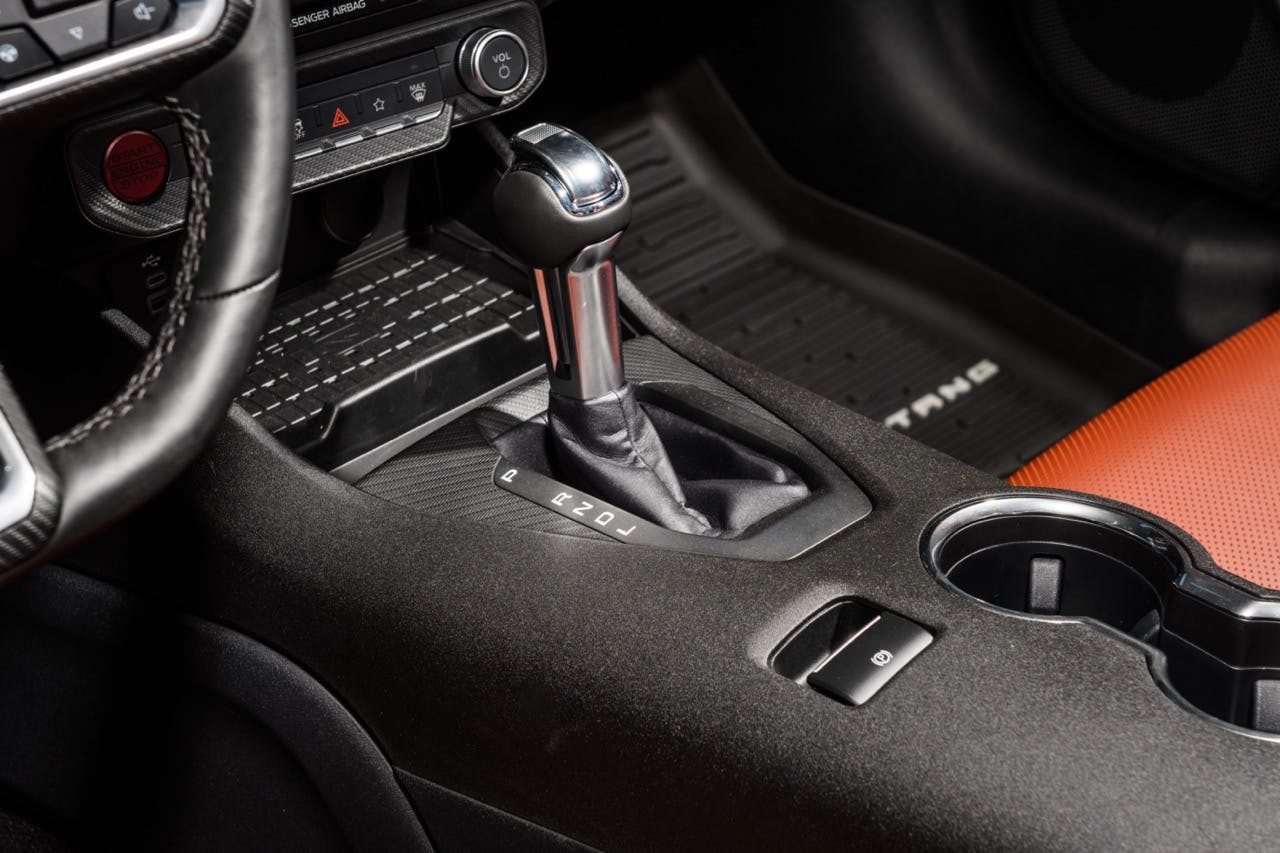
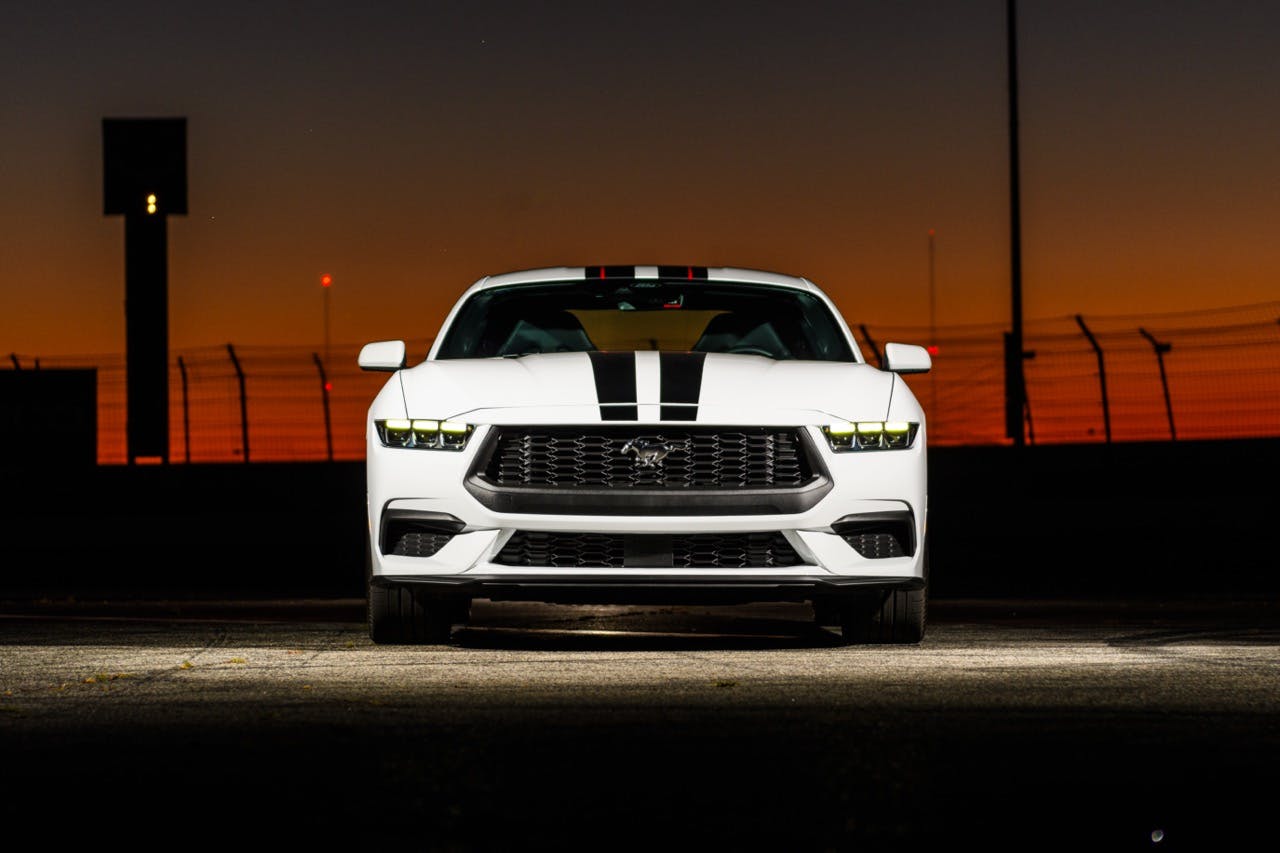
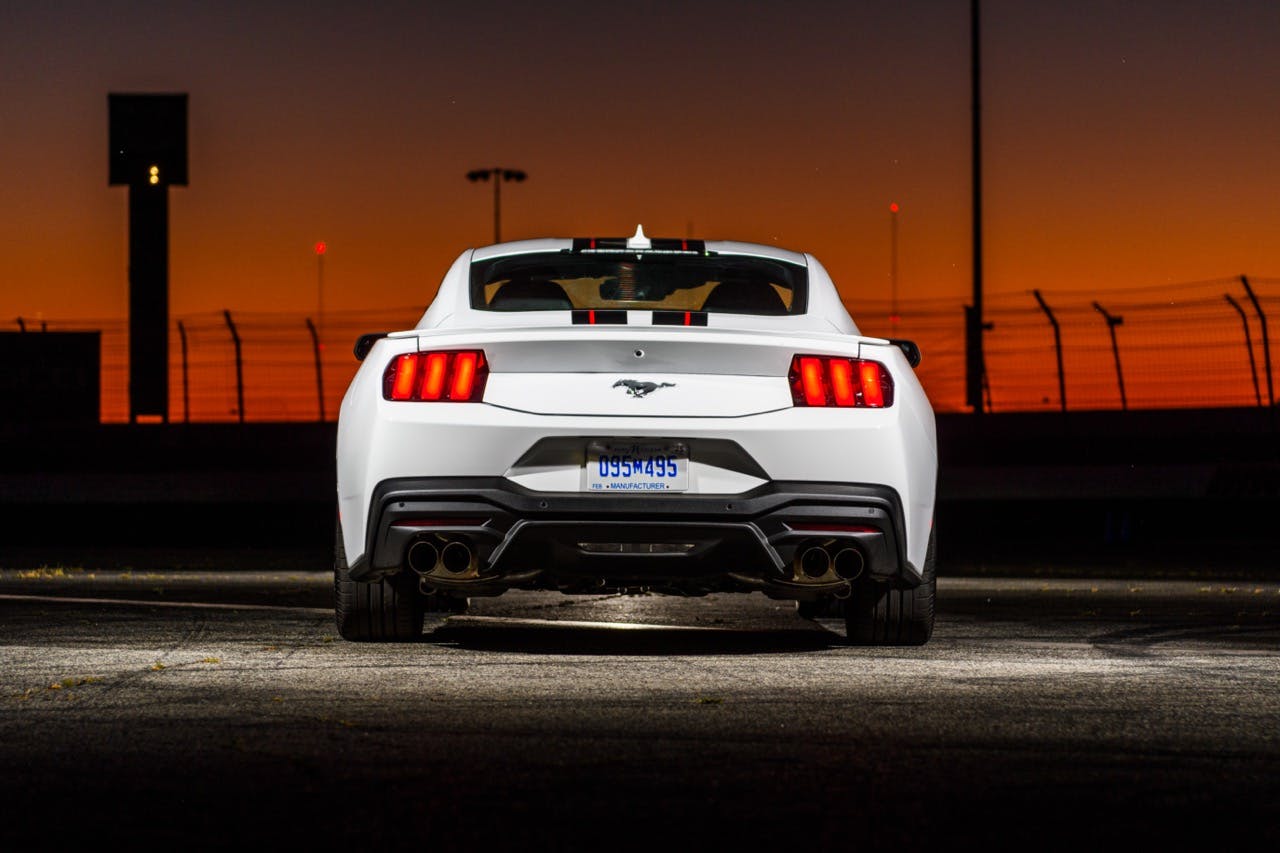
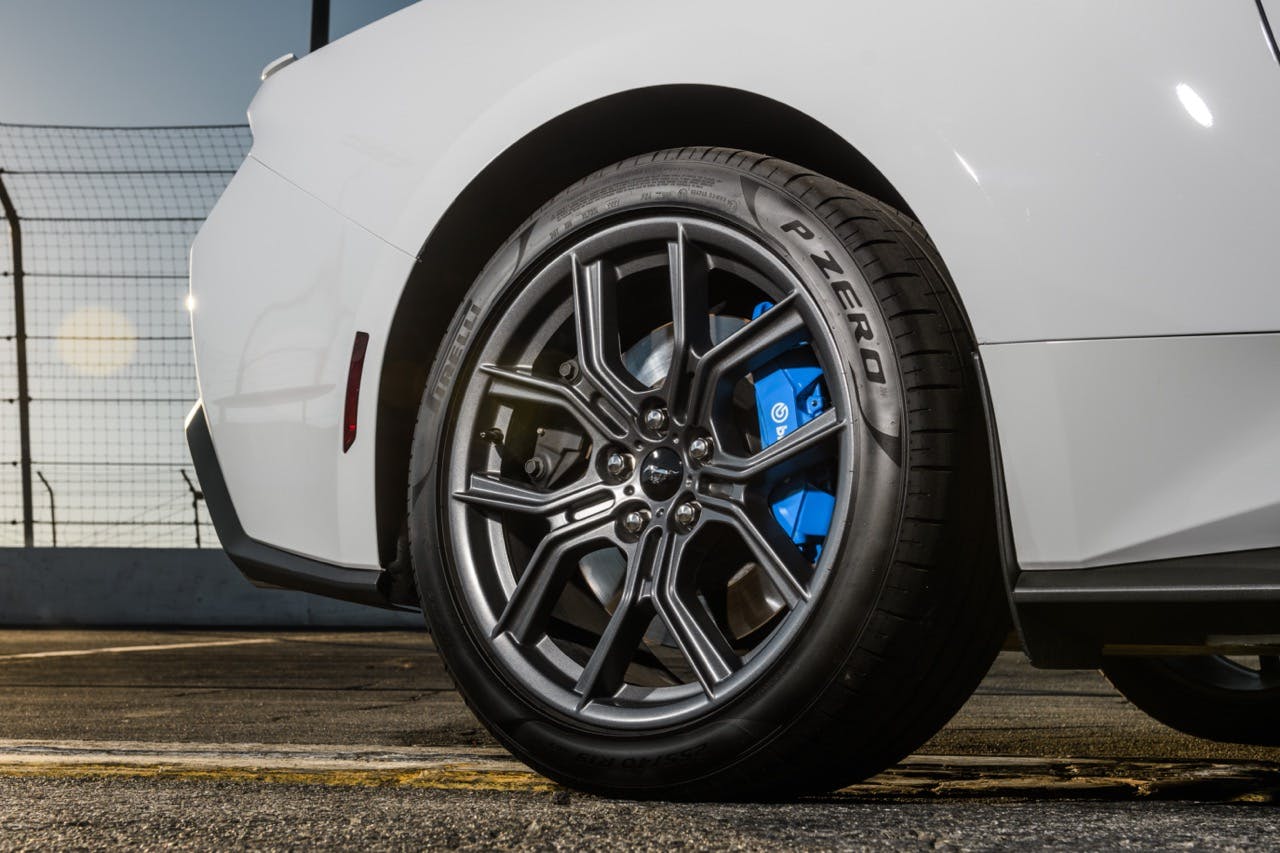
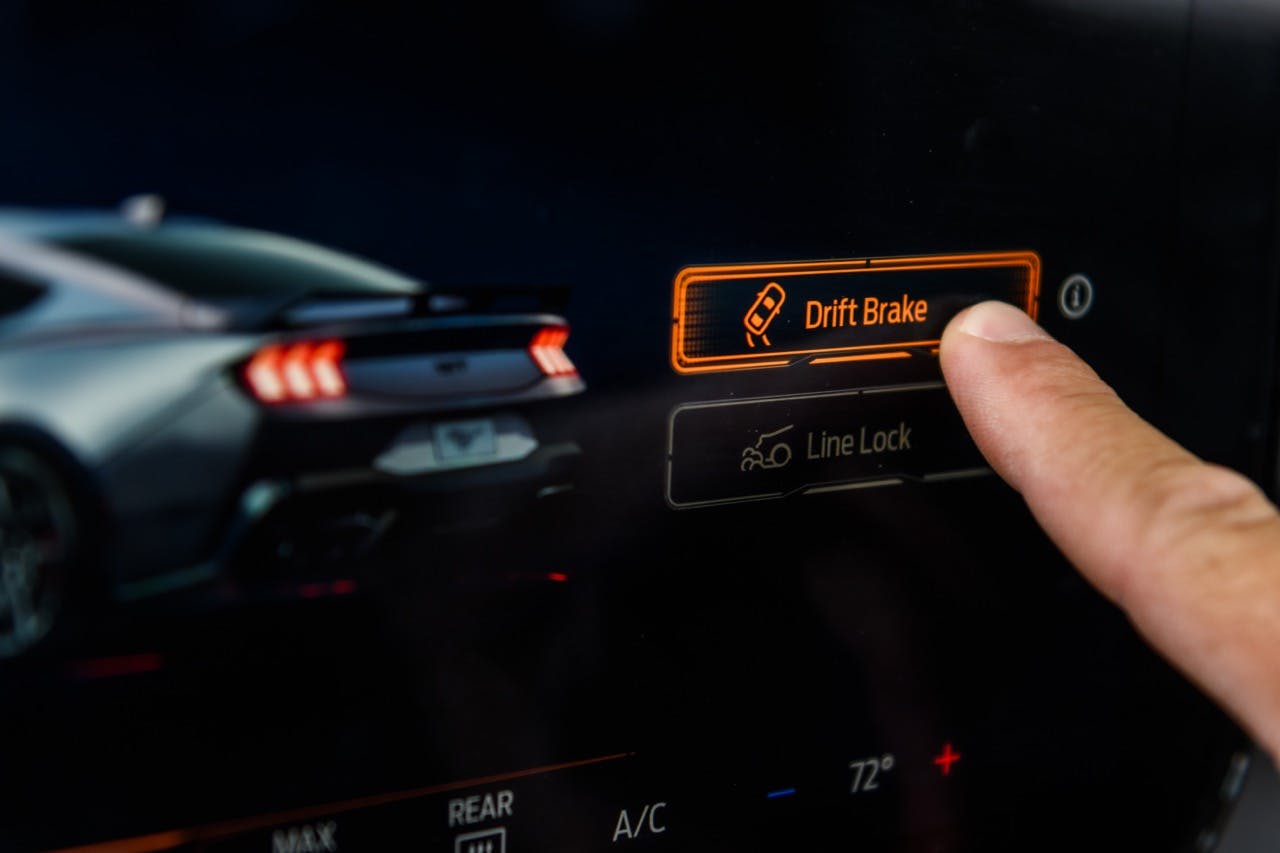
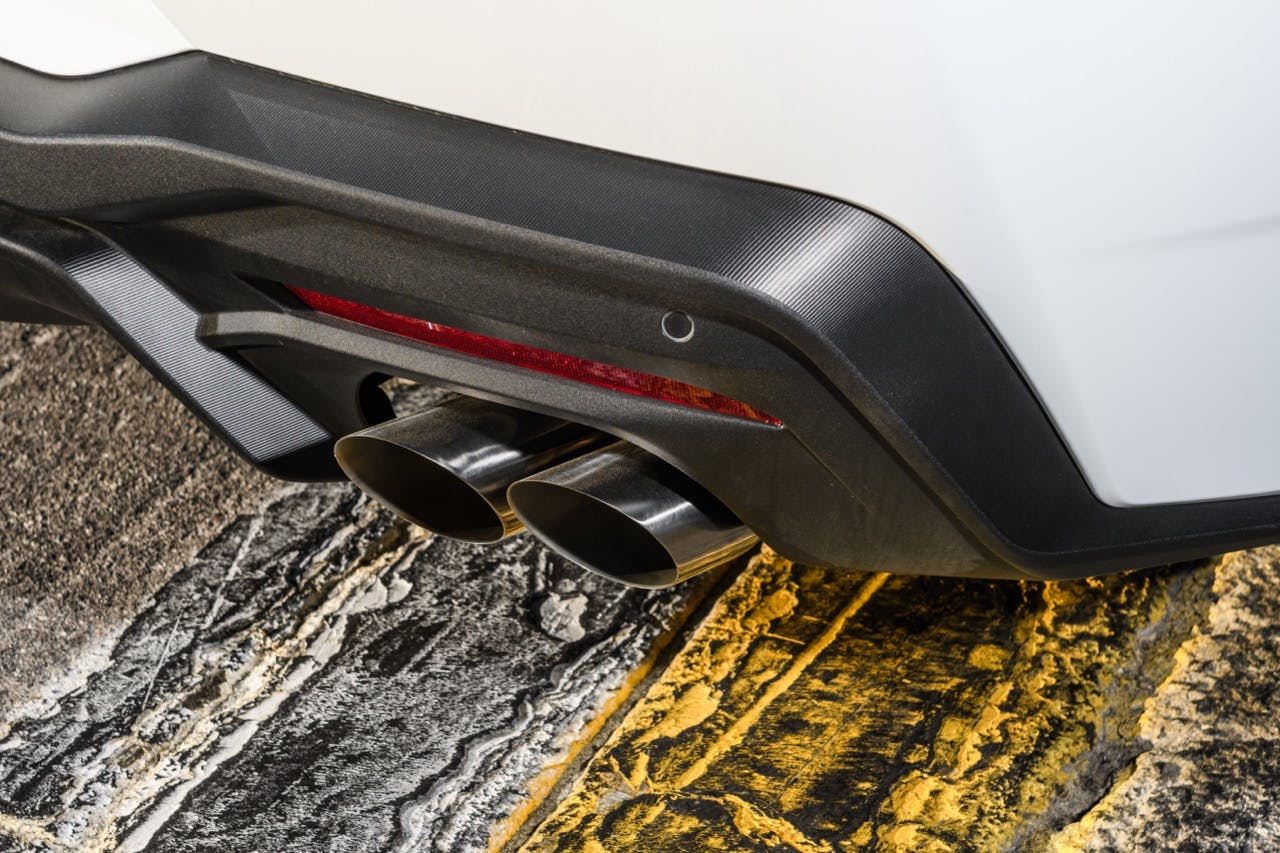
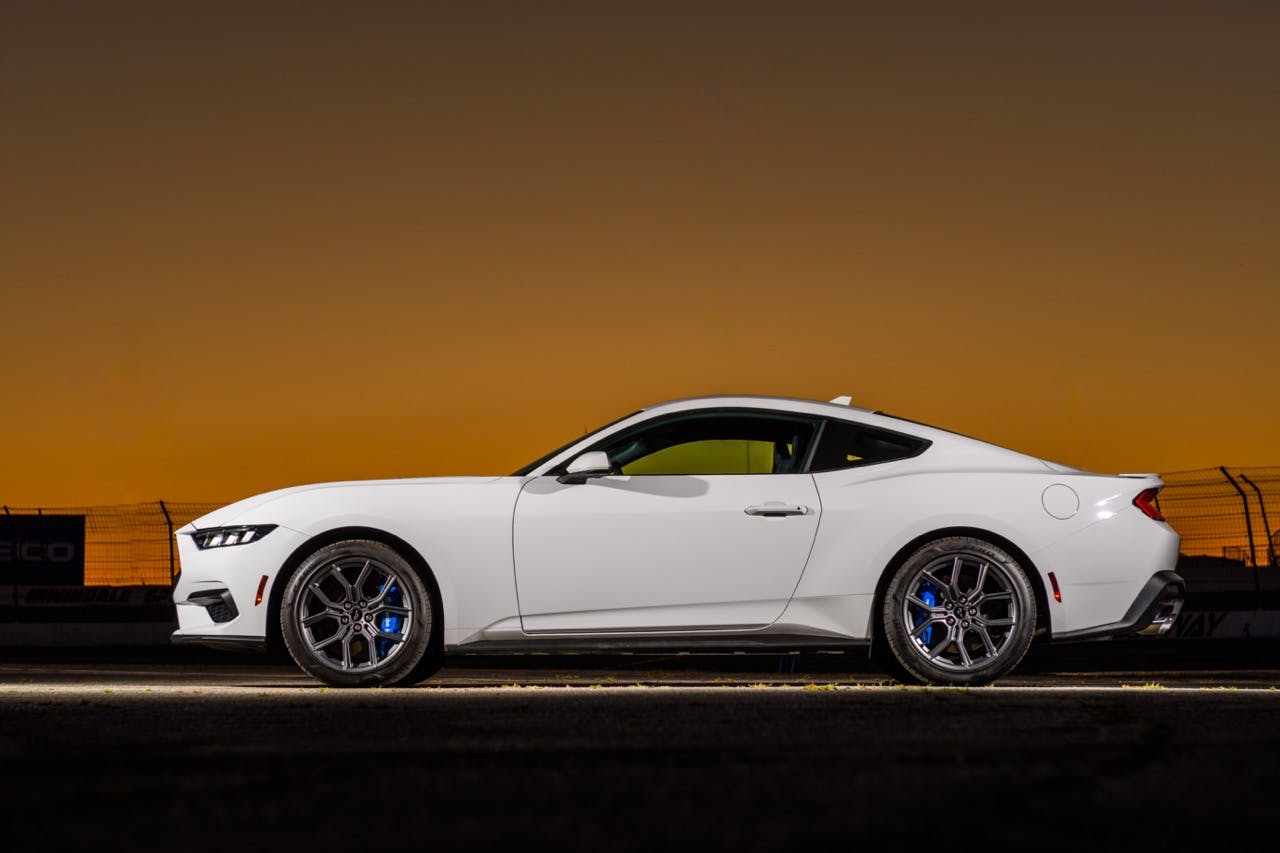
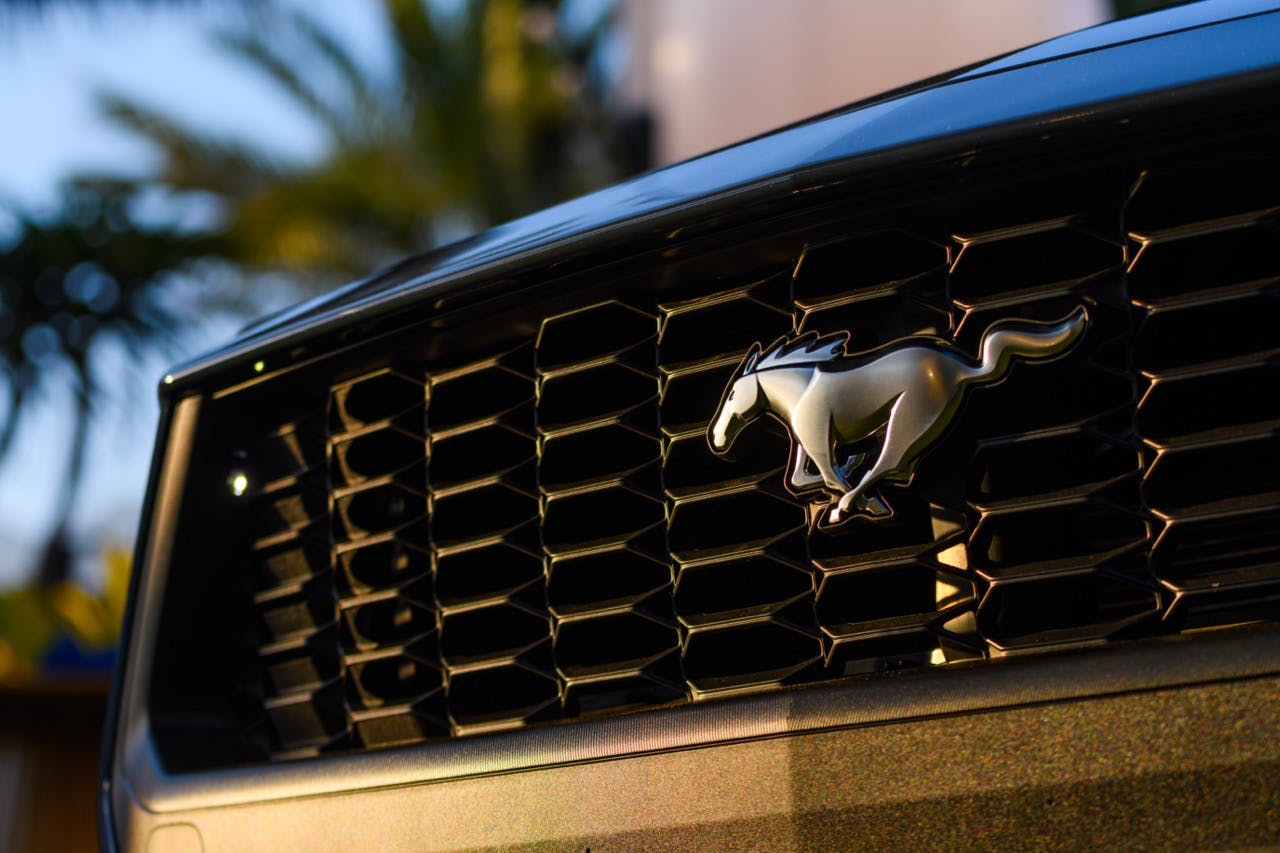
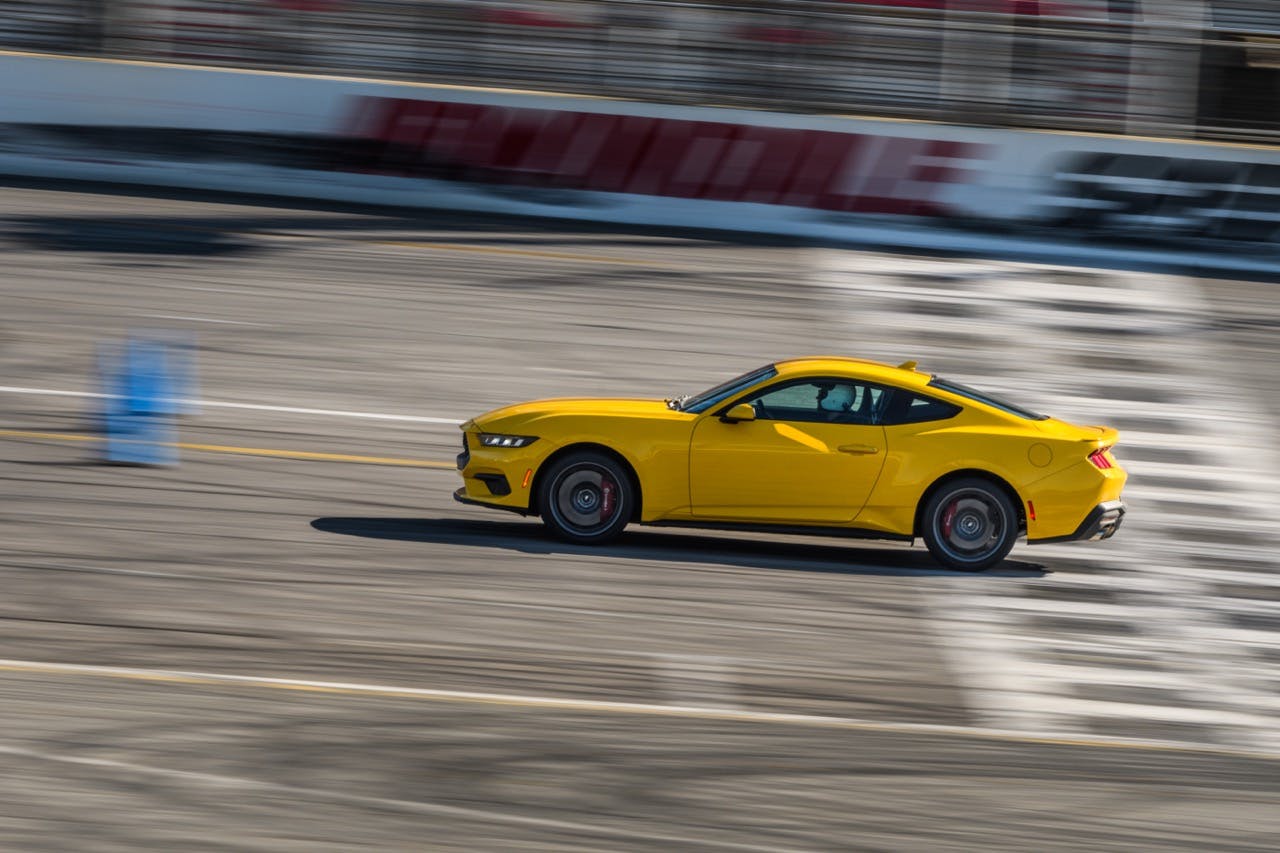

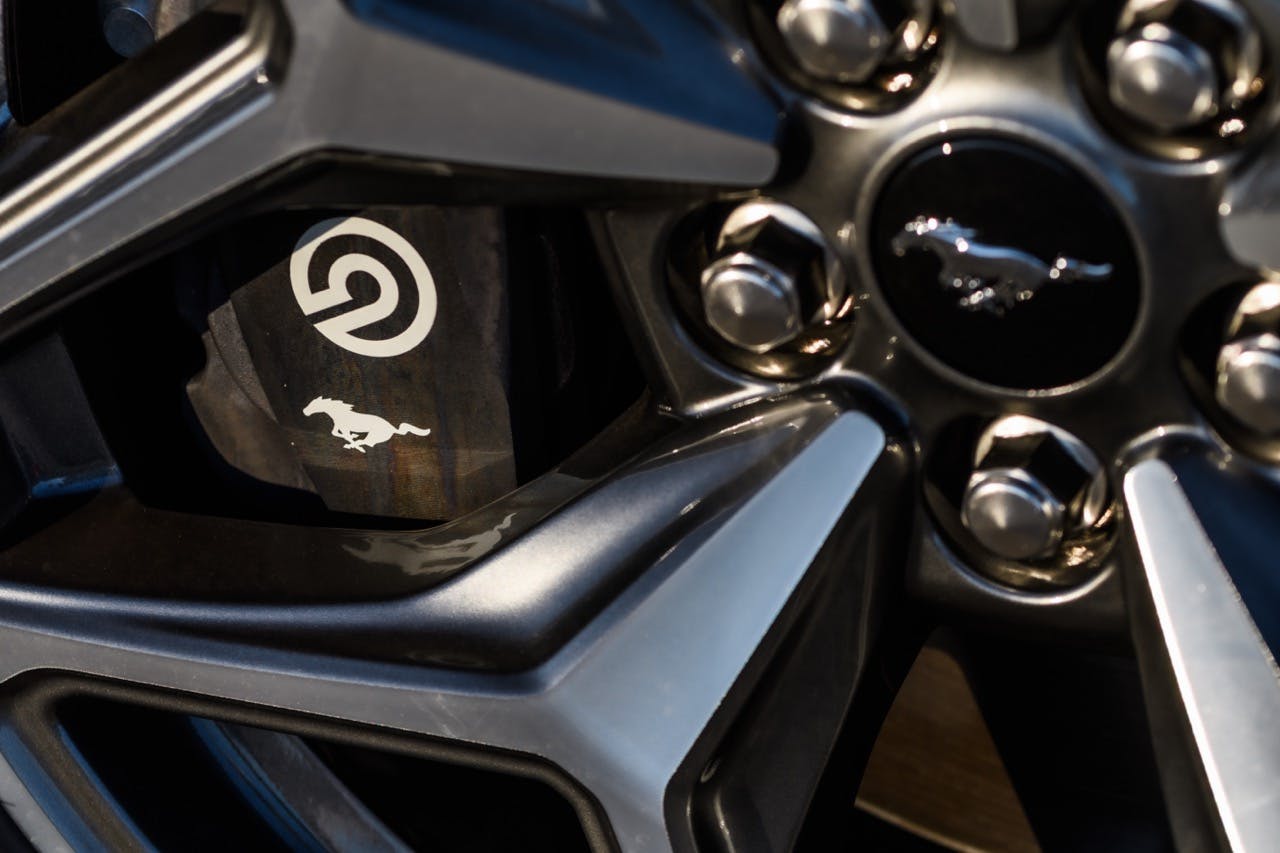
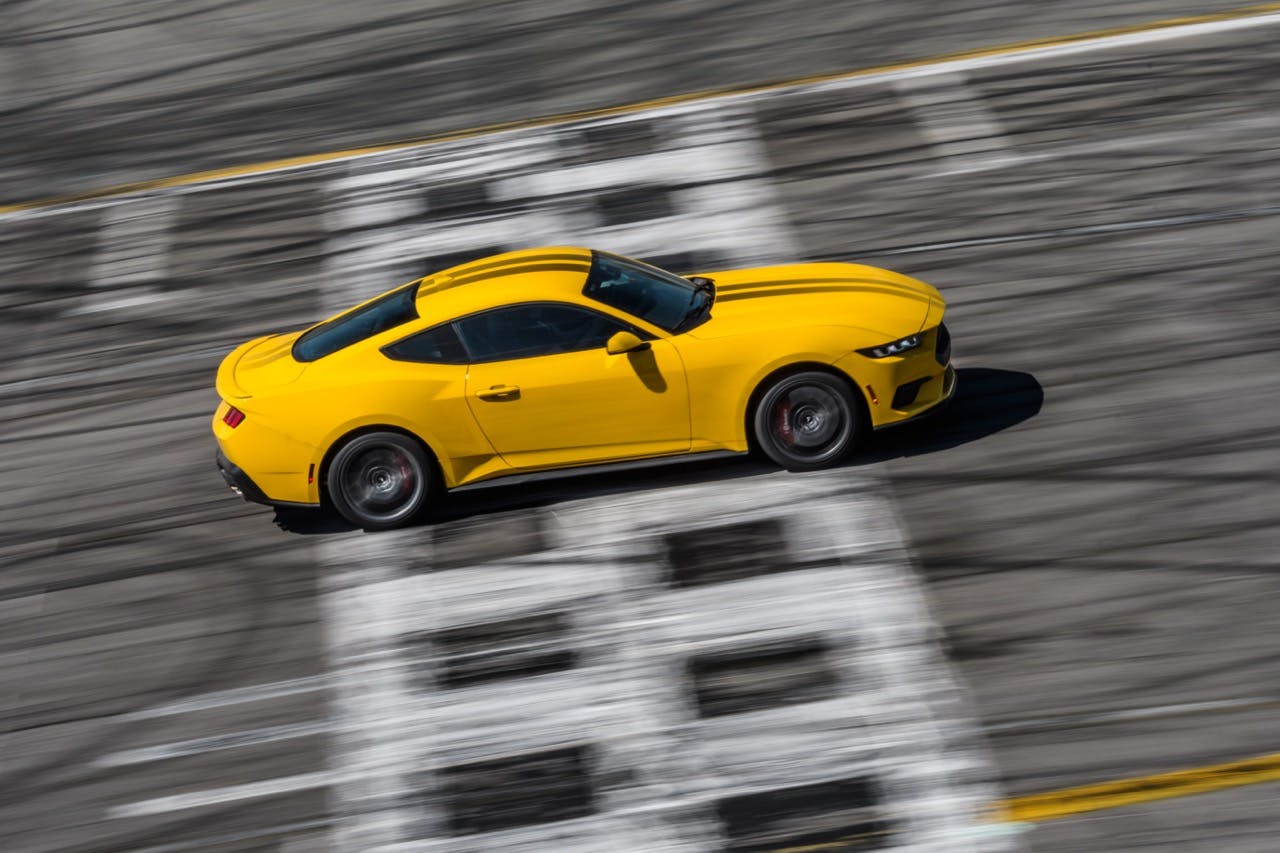
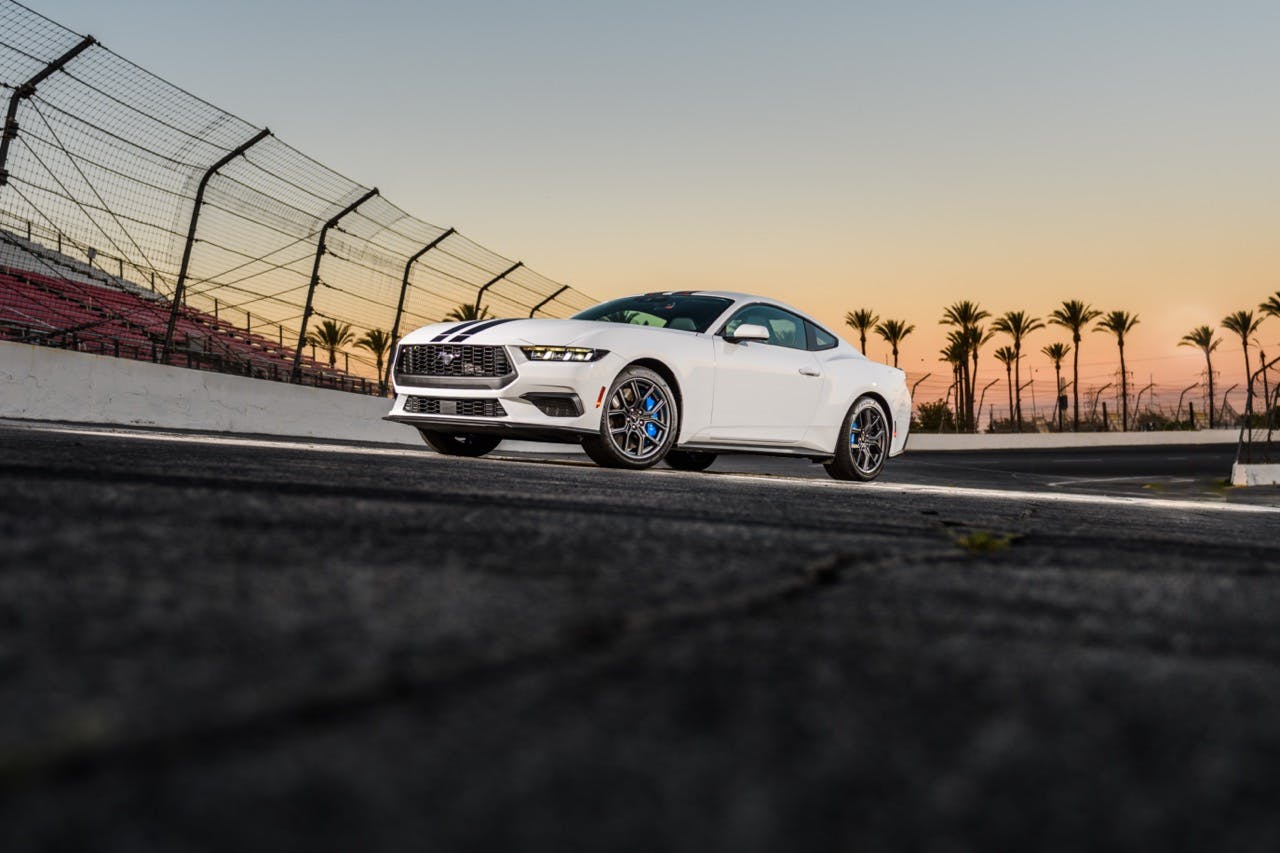

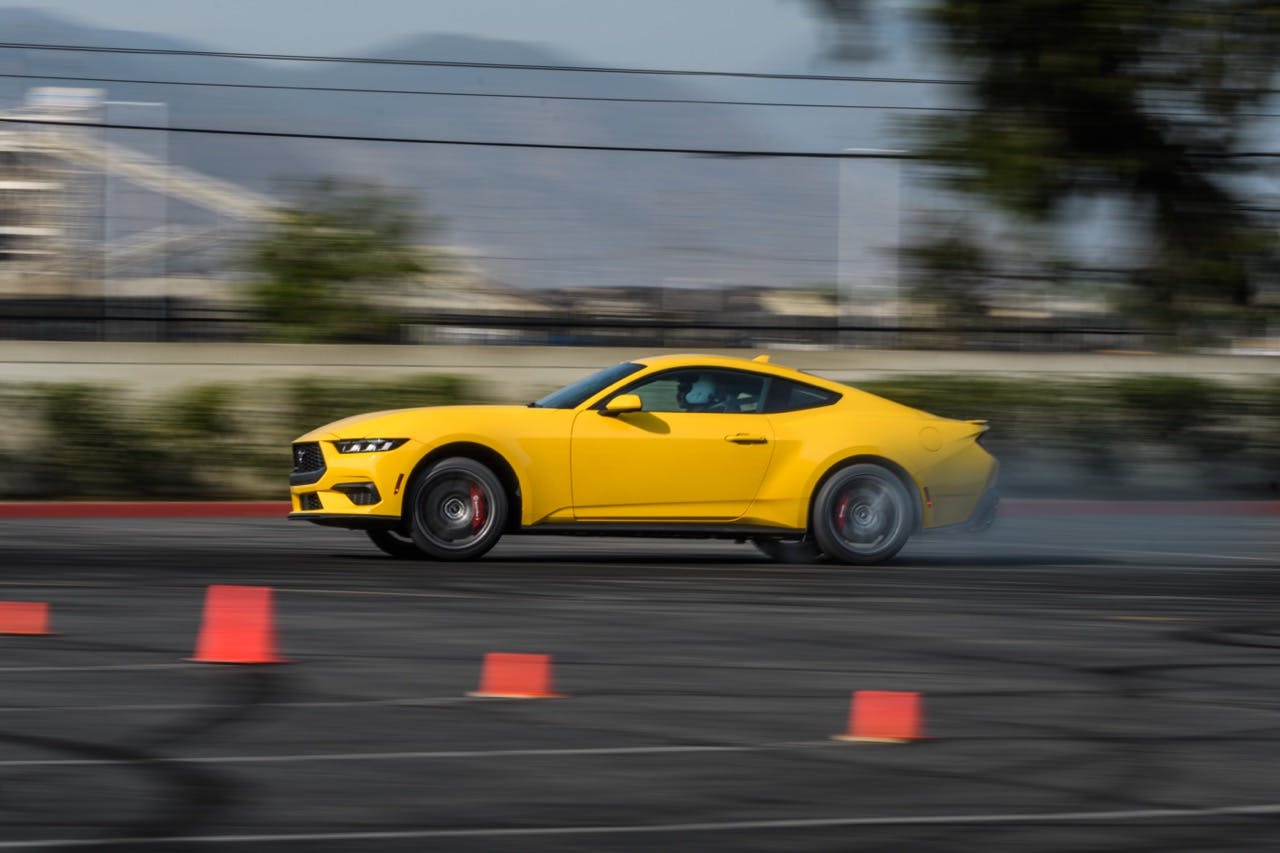

























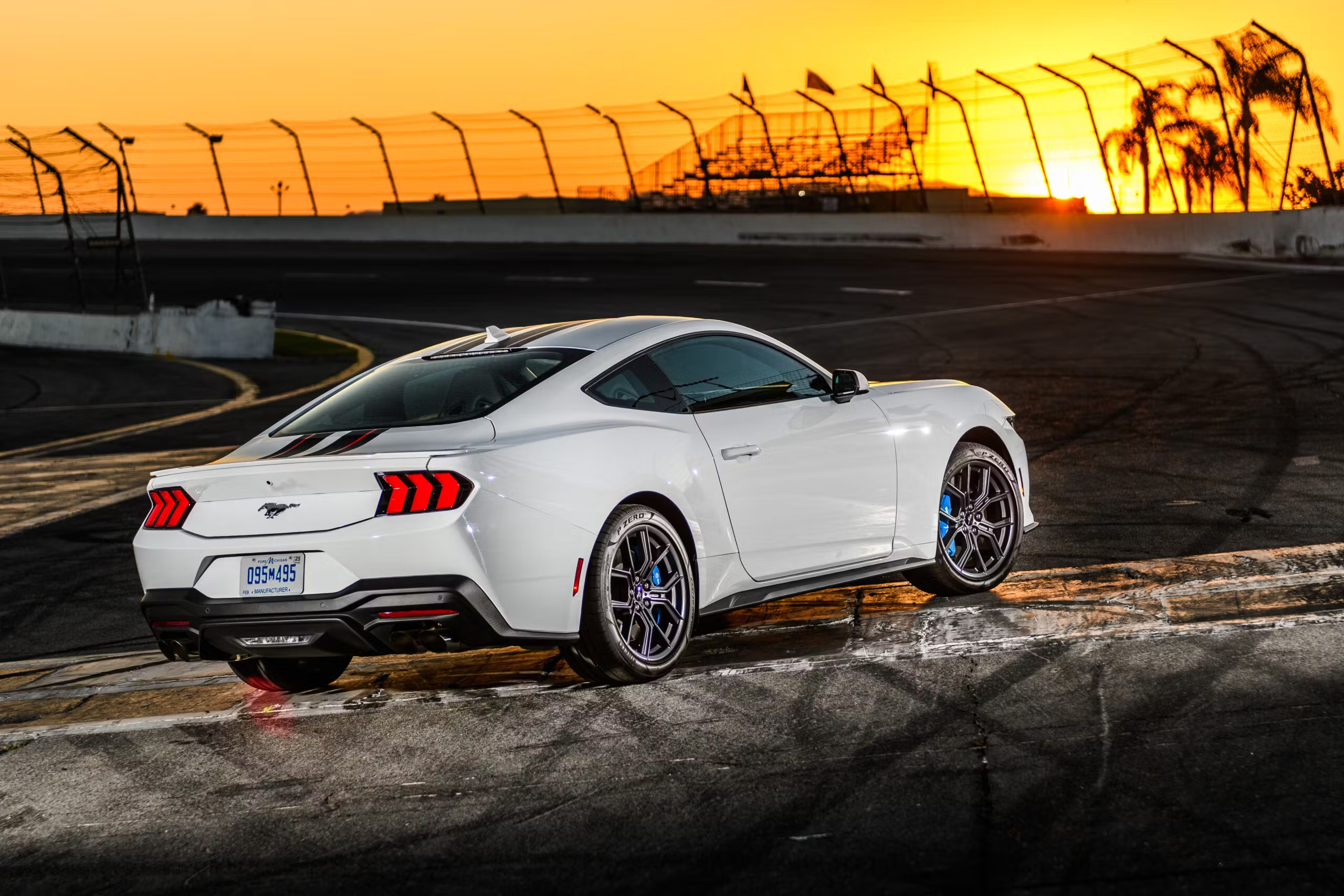
“Except for the fact that your only transmission choice is the 10-speed automatic”
I didn’t read any further after that.
Me either. Ford is leaving a lot of money on the table, no matter what their clown finance folks’ algorithms say. No stick, no buy.
Amen brothers and sisters,….
If we step back from “shiny and techy” should iPad dashes be allowed in anything? Haven’t studies shown that driver distraction is increased and response time for mundane actions goes up with the touch screens vs. the muscle memory of in-reach, well laid out analog controls?
We have a vehicle that requires screen interaction to work the radio… total pain. Actually considering trading it in because the user interface is so frustrating –car is great in all other respects.
As far as Mustang goes, I own a 69 and it is primitive. That is the joy. I had a 2005 and it was fun, though some interior bits were done too cheaply. I’d take any of the modern Mustangs minus the screens.
To widen the appeal, they should have done AWD (makes them daily driver justifiable in my climate) and even hybrid for those that want that for various reasons.
The Fox bodies were great because they were a lego set platform for racing. The iPad dashboards aren’t going to make that easy. Nor are they going to age well as older cars, so I expect the attrition rate of this generation of Mustang to be much higher than previous.
Amen and Right On!
Using an actual iPad while driving is probably illegal, so why make one mandatory for most cabin controls?
God forbid that the screen malfunction — it’d be like losing two dozen manual controls/settings.
?-Generation?
Shouldn’t the 1971 – 1973 models be considered a separate generation?
The body style was a total departure from everything earlier.
There is an inconsistency in how the label gets applied. Not sure if it is by nation, company, fanbase or what.
Mustang logic (mostly) seems to be about the platform underneath the skin making 64 (1/2) to 73 all generation 1.
Falcon-Pinto-Fox… then it gets muddy with modified Fox platform SN 95 that counts as a new generation. After that, just make up the rules!
Modern Ford logic… they’d label that 2-4 generations it seems (i.e., based on current Mustangs and F150s of the last 30 or so years) to capture the outward differences of 64-73.
I’m not sure of what the demographics of the typical Mustang buyer are, but I do know that I see quite a few “older” folks driving the new models. For them and for me, the glass cockpit is a huge step backwards. But I have little doubt that it is cheaper and less complex to assemble than the former one, so from Ford’s POV, it is a step forward. But if it is anything like most of the similar ones I have sampled in rentals and loaners, it is a step backwards.
No thanks. It’s an overweight car with a wall of screens. I’d take an S550 “generation” over this.
I think I will keep my 1984 20th anniversary Mustang, 5.0 that my wife and I bought new when we were at the tender age of 26. After over 200,000 miles of cross country moves, child rearing, drag racing it still has the original engine, I turn the key it starts, I push the clutch in, put it in first and still goes all the way through 5 gears, sometimes getting that urge to powershift up to 4th on some occasions. Simple, cheap, but got us (still have the wife too) where we are today. I like simplicity.
How many times do you see someone (male and female) at a redlight fiddling with some piece of electronics. PLEASE just drive. I do want to make it through that redlight on the first try…
No manual!
No interest, period!
Does the intended demographic (The Cool Kids) have the financial resources to buy this car? I find it hard to picture anyone under 35 years old being interested in, or able to afford, this car. Convince me I am wrong. I am all ears.
33 here. I’ve wanted to like newer Mustangs, but they never really seemed to be great value for money, especially when you consider the alternatives. I grew up driving manuals and not even having an option for one is a mistake. So for $35k, there are better options out there, especially if you broaden the scope to include gently used vehicles, that would get my vote over this. M240i, anyone? Hell, you can get an S550 with a manual and a V8 with low miles for $35k and it’ll be 90% the same car (and not have an ipad for a dash.)
As far as affordability, eye of the beholder, I’d say, but I’d take a swing and say that the majority of folks in my age range who could afford this, wouldn’t want it.
I know my wife and I are probably considered part of the older group of potential Mustang owners, but we are clearly on the younger side of Hagerty readers and responders. As a card-carrying member of Gen X, I grew up seeing and admiring classic Mustangs and seeing the Mustang evolve, for better and for worse until it regained it’s stature in the mid-to-late ’80s. I learned computer programming in high school and have incorporated computers and technology into my career and personal life ever since. That’s a long way of saying I don’t fear technology, electronics and progress in vehicles. My only fear was whether the screens would be an issue under direct sunlight in the convertible model. My wife already has a ’24 EcoBoost convertible on order. Her needs don’t require the GT, and if she ever feels the need for speed, there are other options in our garage. We are looking forward to the advances of the ’24 Mustang and many miles of top-down cruising. There really aren’t a lot of choices in a convertible car that needs to have a little more cabin/leg room than a Miata (which we would own today were it not for that unrecoverable shortcoming). If the Mustang doesn’t embrace the future, it will end up like the Camaro and Challenger. Which is worse?
Camaro will be back as a 4-door EV by the looks of it. Not the way I would play it, but I am no industry giant or insider.
Trans Am did it right with the 1974 Super Duty “Do not go quietly into that dark night”. It kind of feels like the Dodge “last calls” are emulating that.
While conceding that “Charger” is a natural name for an EV, it remains very unclear if Stellantis has any understanding of the North American market niches its brands do well in. Time will tell.
Mustang isn’t going away. Could it be a sales flop in a future form… sure. Is the 2024 the beginning of that –maybe. The response to that (yet to happen failure) is the thing to watch I think.
Actually, the ’73 SD was the one. At least it’s hood intake was OPEN so you could enjoy that 455 take in air through the Q-Jet. I am 70, and was very much aware when these and many other cars hit the market in the late 60ies / 70ies. I enjoyed seeing them on the streets when they were brand new. (O:
Not having a stick shift in the EcoBurst should mean that if Ford’s going to make us spend $15K more for a Mustang with a clutch pedal (GT), at least it should be a Tremec, not the Chinese POS MT-82.
I foresee keeping my ’19 GT for quite a long time…and it doesn’t look like someone dropped a Jersey barrier on the trunk lid, either.
It is good that the “base” model has lots of HP, but to me (owner of a 1984 GT convertible), I would not be interested unless it has the V8 sound. Many complain of it having no stick, but I wonder if most of them have bought anything brand new with a stick in the past 20 years. If things don’t sell, they likely will not be kept as an option – including the stick.
One question, though – why have apparently no Mustangs been available with a sunroof or moonroof since 1993? True that they have a convertible, but so does the Camaro, and it has a moonroof option for the coupe. Same choices for the Audi A5/S5, also, for example.
The Mustang II was not Pinto-based.
Geeh…
Ever hear of the Mustang II suspension?
Uh…yes it was. People refer to the suspension as “Mustang II” because, well, it sounds better than “Pinto”.
I bought a 2022 EcoBoost HPP Mustang last fall, it does have the 10 Speed Auto, but it’s still quite fun to drive. I had thought of getting it with a manual, but this 10 speed automatic car had a great color (Grabber Blue) and was loaded with options and it had the handling package and the Magnaride. It also has the Pirelli P-Zero’s. I just liked the car because it was something different.
Does anyone actually look at the road in front of them anymore? Or are they too busy staring at their on board TV screen to see that they’re about to go head on with a family with kids in the back seat. No manual trans, so we’re not distracted by shifting. Gives us more time to find the idiot “drift brake” button. Thank Christ there are used cars out there because anything they’re making now is kind of an embarrassment, at least for those of us that remember what a pony car once was. This thing is a computer chip with 4 wheels attached.
The progenitor of the Fox Mustang was the Fox Fairmont (remember those?). Thus, the Fox “body” ‘Stangs were really Fox platform cars. (like the first Mustangs were Falcon platform cars)
Picky, picky, picky-I know. Just a pet peeve.
Thankfully Ford left this one on its previous platform. There had been much speculation that it would move to the Explorer platform.
Not a Ford man but long live the Mustang! (just not on a truck platform)